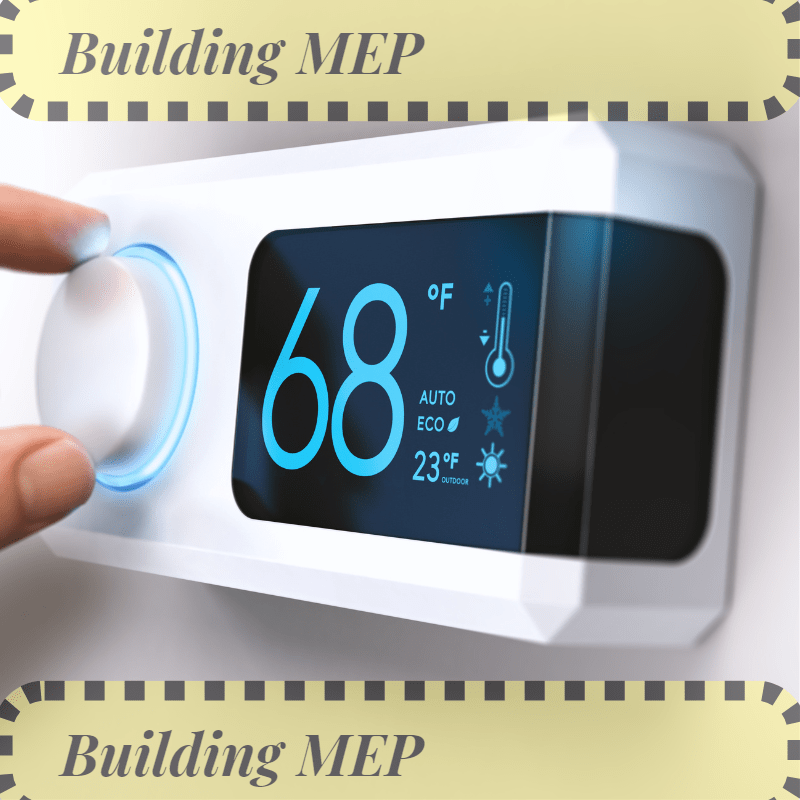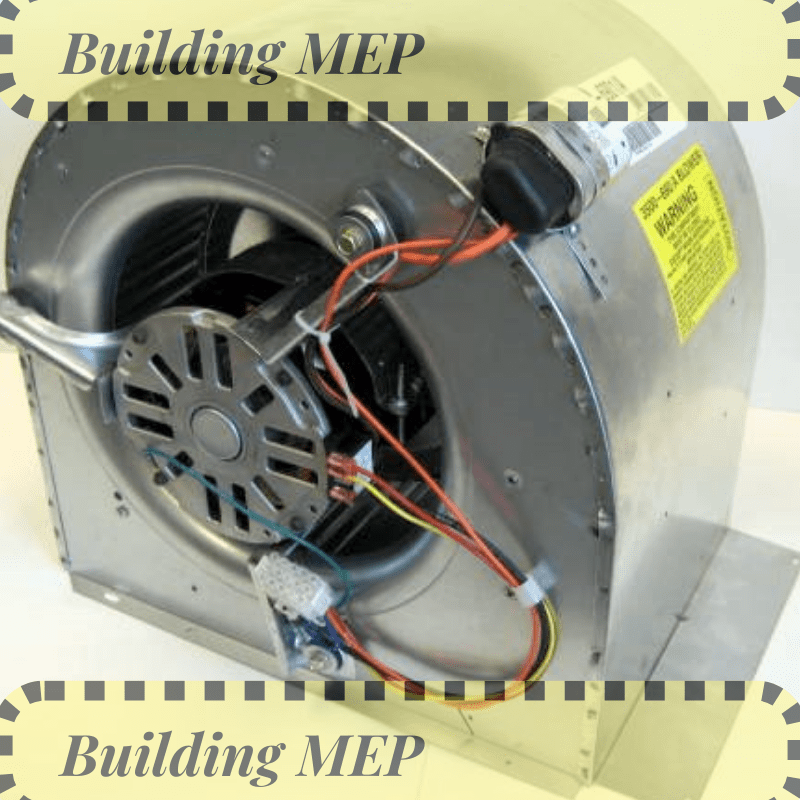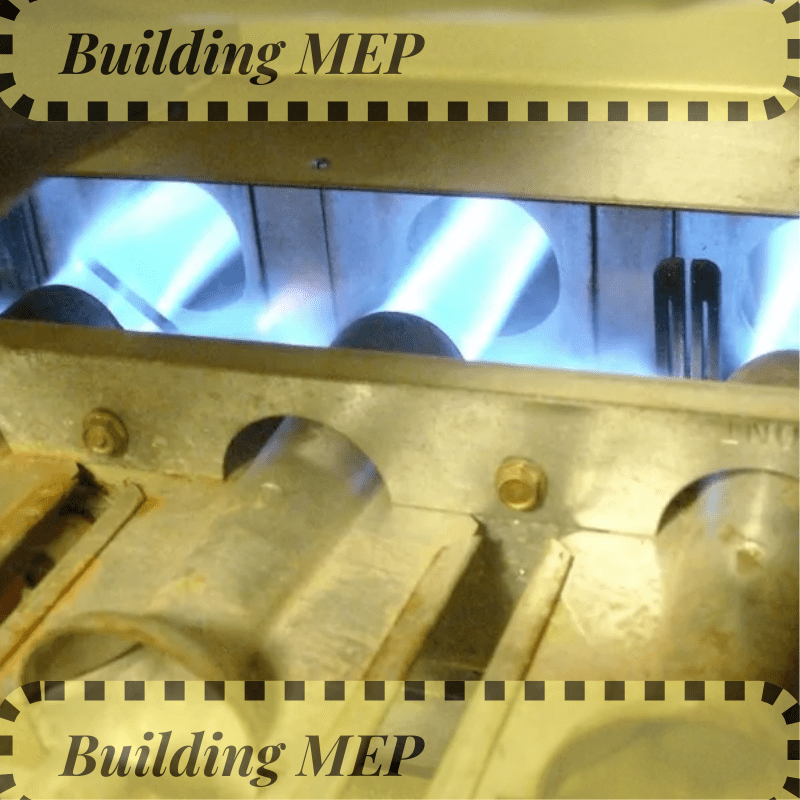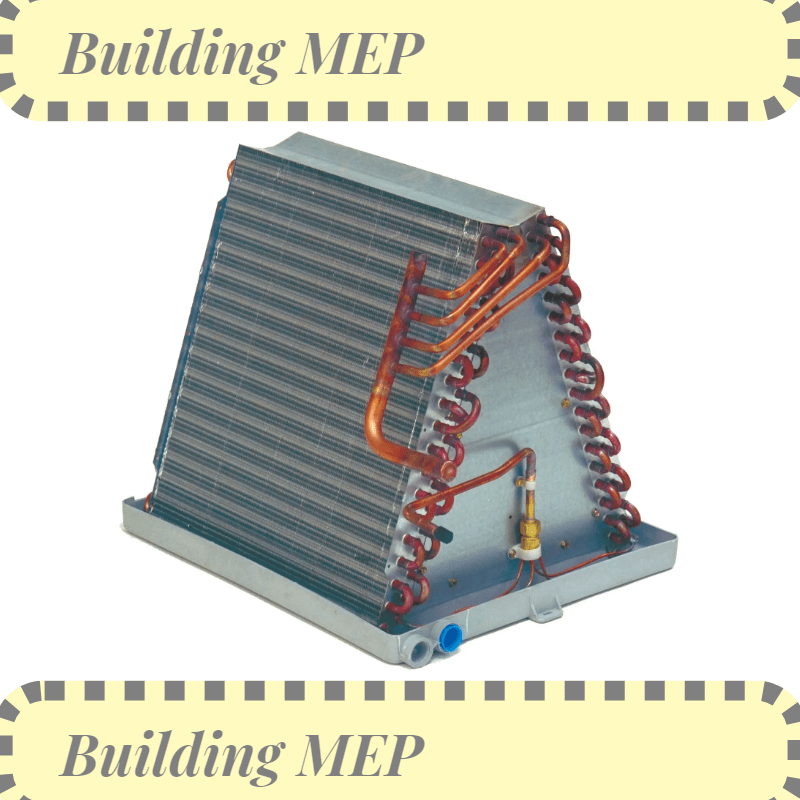If you are involved with HVAC systems, you surely will be interested in knowing the main components of an HVAC system. An HVAC system is an integral part of keeping buildings cool and comfortable during summer and warm and cozy during winter months.
As a PhD. scholar in Mechanical Engineering with 10 years of experience in the field of MEP/HVAC services, I have gained an in-depth understanding of the components that make up an HVAC system. Through my research and practical experience, I have developed a keen expertise about HVAC systems, and am well-equipped to provide accurate and insightful information on the subject.
After reading this article, I assure that you will be able to know your HVAC system better and it will not only help you in keeping your system efficient but will also help in fixing any problems.
This blog post will cover: The main components of an HVAC system and their role in heating, ventilating and air conditioning of your homes/offices/buildings.
What are the Main Components of HVAC System?
The main parts or components of an hvac system are divided into two categories
(A) Electrical Components of HVAC system (B) Mechanical Components of HVAC system
A- Electrical Components of HVAC system
Here are the main electrical parts of an HVAC system
I – Thermostat
What is a Thermostat?
A thermostat is the control device that senses the temperature of the room and sends signals to the HVAC system to adjust heating or cooling. With a thermostat, you can heat or cool only the rooms that you are using or where you are going to be staying for a long time. You can turn your thermostat up or down based on your preference. You should maintain an appropriate temperature for your family.
Programmable Thermostat – A Blessing
You can save a lot of time and money by installing a programmable thermostat in your home. It is either directly in connection with your HVAC system or some wired connection is made. This can save you a lot of energy since you will be able to adjust the heat or air conditioning to the most convenient temperature level for everyone living in your home.

With a thermostat, you can save up to 40% of energy. A programmable thermostat will allow you to set different temperatures for different parts of your house. You can set the temperature level of each room to whatever you prefer, whether it is hot or cold.
For instance, you can have one part of the house warm during the day while another part cools down at night. You can also set your temperature to a specific level of comfort. If you are away for some reason, your programmable thermostat can be set to automatically adjust your home’s temperature according to the time of day.
II – Compressor
What is a Compressor?
The compressor is an electric motor with a piston that is used to compress the refrigerant. The compressor puts out the low-pressure gas into a high-pressure gas. The compressor’s function is to pressurize the refrigerant in the system and circulate it, which concentrates the heat that it contains.

Working of Compressor
The compressor works by sucking in a refrigerant through a suction port and forcing it out through a discharge port. The suction port and the discharge port are connected by a passage. The refrigerant is pumped by the compressor until it reaches the desired pressure and temperature. The compressor uses the refrigerant to condense the liquid into a gas. It is the heart of the refrigeration system. The compressor is the part that keeps everything running.
III – Blower Motor
Function of Blower Motor
An air blower motor (or blower motor) uses electricity to power an electric fan which forces air into the system. It is installed in the system where it can be controlled by the thermostat, thermostatic expansion valve, and/or cooling load. A blower motor moves the air through the air system which forces the air to enter the supply registers in your furnace.

Blower motors are used to control the amount of air flowing through the vents of a furnace, air conditioner, and/or air handler. The blower motor is responsible for sending the warm or cool air throughout the house.
Blower Motor – A Vital Part of HVAC System
Blower motors are a vital part of the HVAC system because it sends the hot or cold air into the various vents or openings of the house. The blower motor turns the electric fan attached to it, which causes the hot or cold air to be blown into the house.
Blower motors are used to regulate the speed and volume of the flow of air from the HVAC unit. The blower motor is also responsible for controlling the pressure of the air being released from the vents of the HVAC unit.
IV- Control board
The control board is the main component that communicates between the thermostat and the HVAC system’s electrical components. The control board is an important electrical component of an HVAC system. It acts as the “brain” of the system, controlling and regulating various functions of the HVAC unit. The control board is responsible for receiving input from thermostats and other sensors and then executing commands to operate the system’s mechanical components.
The control board controls various operations, such as turning on the blower motor, regulating the temperature, and monitoring system performance. It also controls safety features such as the pressure switch, which monitors for blockages or other problems that could cause unsafe conditions.
If the control board is malfunctioning, it can cause the entire HVAC system to stop working or to work inefficiently. Therefore, regular maintenance and check-ups on the control board are essential for the system’s optimal performance. In some cases, a faulty control board may need to be replaced to ensure the proper functioning of the HVAC system.
V- Capacitors
Capacitors are an important electrical component in HVAC systems. They are designed to store and release electrical energy. Capacitors are used in various parts of HVAC systems including compressors, fans, and motors.
Working Principle of Capacitors
Capacitors consist of two conducting plates separated by an insulating material called a dielectric. When a voltage is applied to the plates, electrons accumulate on one of the plates and are repelled from the other plate. The energy is stored in the electric field between the plates.
Role of Capacitors in HVAC System
In HVAC systems, capacitors are used to provide the initial voltage needed to start motors and compressors. They also help maintain a constant voltage during operation, which ensures smooth and efficient operation of the system. Capacitors are also used to store energy and release it in short bursts, which is particularly useful for the starting and stopping of motors.
Possible Problem Caused by Capacitors
Capacitors can fail over time due to wear and tear, temperature fluctuations, and electrical surges. When capacitors fail, they can cause motors to run poorly or not at all. This can lead to increased energy consumption, decreased efficiency, and even system failure.
VI- Relays and Contactors
Relays and contactors are important electrical components in HVAC systems. They are responsible for controlling the flow of electricity to various components, such as motors and compressors, in order to ensure proper functioning of the system.
Relays work by receiving a small electrical signal and using it to control a larger electrical load. They act as an electrical switch, allowing or preventing the flow of electricity to certain components in the system. For example, a relay may be used to turn on a fan motor when the thermostat signals the need for cooling.
Contactors, on the other hand, are similar to relays but are designed to handle higher electrical loads. They are commonly used to control power to motors and compressors in HVAC systems. When the thermostat signals the need for cooling, the contactor allows electricity to flow to the compressor, which then starts working to cool the air.
Both relays and contactors are essential for proper functioning of HVAC systems. If they malfunction or fail to operate, it can cause the system to stop working or lead to other issues such as overheating or electrical damage. Regular maintenance and inspection of these electrical components can help prevent such problems and ensure optimal performance of the HVAC system.
B- Mechanical Components of HVAC system
Mechanical components of an HVAC system include:
I- Heat Exchanger
What are Heat Exchangers?
Heat exchangers are important in your heating and cooling system. A heat exchanger is a device that transfers heat energy from one medium to another. For instance, they transfer heat from the water circulating through a central air conditioner’s condenser coil to a liquid refrigerant inside the unit’s evaporator coil.
Working Principle of Heat Exchanger
Heat exchangers work by using two fluids; the first is the “working fluid” that absorbs heat. It circulates through tubes within the heat exchanger to be transferred to the second working fluid. The working fluid that has been cooled circulates through a condenser coil, releasing its heat energy to the ambient air, then passes through a water trap to protect the rest of the unit.
Role of Heat Exchanger in HVAC System
The heat exchanger is a part of the furnace. It is in the basement and it takes heat and warms cool air. Most homes have two heat exchangers: one is near the basement and the second one is near the living room or master bedroom.
A heat exchanger is used to transfer heat from one space to another. This process happens when cool air enters a room. It gets heated in the heat exchanger, which is located in the basement. The warm air is then distributed throughout the home using ducts.
Problem Caused by Heat Exchanger
These heat exchangers absorb heat and warm the cool air, and it is possible for them to malfunction and create a problem. This can cause carbon monoxide leak and that can cause headaches, nausea, or even death. Most homes have carbon monoxide detectors in their home to warn people about any leakage. It is important to have them checked for any signs of damage. This is so you will know if there is something wrong with your furnace.
II- Combustion Chamber
• What is a Combustion Chamber?
A combustion chamber is a heating device that uses a flame to transfer heat from one place to another. The combustion process takes place in these devices as a result of chemical reactions. These chambers are used to burn various types of fuels, including natural gas, propane, oil, kerosene, coal, wood, charcoal, etc.

• Working of a Combustion Chamber
In the combustion chamber, oxygen is brought in and mixed with the fuel to ignite a burning flame. After the flames are created, the remaining gases escape and turn into smoke, which is then carried through ductwork and vents to the outdoors. When a small quantity of an air and gas combination enters the combustion chamber in a gas furnace, the heating cycle begins.
Combustion chambers are mainly used for heating purposes; however, they can also be used for cooking, drying clothes, sterilizing dishes, sterilizing instruments, drying food, and producing hot water.
• Glow stick and Pilot Light in Combustion Chamber
A glow stick is an electronic ignition system, while a pilot light is simply a tiny tube that constantly releases a small amount of gas as fuel for a flame. Glow sticks light automatically, but homeowners have to relight pilot lights if they go out. Only older furnaces have pilot lights because they use more gas than glow sticks. Also, they can release carbon monoxide if they go out, which causes a safety hazard.
Most homeowners think that glowsticks only provide an auxiliary lighting function to the main burner, but that is not true. Glow sticks come in different colors and sizes. For example, there are yellow, blue, red, green, and orange glow sticks. Glow sticks burn for 15 to 20 seconds and can light up your whole room at once. Some are very bright and others less so. Some have flashing and blinking LEDs that create an effect of a nightlight or strobe light.
III- Condenser Coil
What is a Condenser Coil?
One of the most important parts of your air conditioning or heating system is the condenser coil. The condenser coil takes heat from the outdoor air and removes it from the system. A fan pushes the air through the coils. The condenser coil is an aluminum or copper line that is usually covered in insulation.

Role of Condenser Coil in HVAC
The main role of the condenser coil is to cool the hot air that comes out of your home. It does this by removing the heat from the air and sending the cooled air into the house. The fan moves air in and out of the condenser coil. The airflow will continue until the coil becomes warm enough to remove heat from the air.
Location of Condenser Coil
The condenser coil is located on the outside or on the roof of your building/home. This is where the air goes before it gets inside your home. It is made up of a metal cylinder. This is usually attached to a fan.
Maintenance of Condenser Coil
Keeping your condenser free of dirt, fallen leaves and debris helps your HVAC system to work more efficiently. If you have a dirty condenser coil, it will lose its effectiveness. It will require more electricity to heat and cool your home, and it may even fail to perform correctly. In this case, you should call a professional HVAC contractor for help.
IV- Evaporator Coil
What is an Evaporator Coil?
The evaporator coil is a series of coils that are located near your air conditioning and heat pump. When the warm air is blown through the coil, it absorbs the heat and becomes less humid.

This is an important part of your HVAC system. It works by absorbing heat and lowering the temperature in your home. The evaporator coil does this by spraying liquid refrigerant from the nozzles or valves. These nozzles or valves are called expansion valves. The expansion valve sprays the liquid into a chamber, causing it to evaporate. This will absorb the heat.
Then it’s distributed across the air conditioning or heating unit. After that, the liquid gas is sent back to your condenser coil where it causes water to change back to a liquid. This will remove heat and lower the temperature.
Types of Evaporator Coil
There are two types of evaporator coils: direct-expansion coil and indirect-expansion coil.
If you have an air conditioner, you have a direct-expansion coil. This type of coil uses a water reservoir to absorb condensate. In this system, the cooling coil is surrounded by air that is circulated from the room that needs air conditioning.
In the indirect expansion system, the cooling coil in the air handling unit is pumped with secondary refrigerant-cooled water or brine from the refrigerator.
Problems Caused by Evaporator Coil
Your evaporator’s condensation can encourage the formation of mould, and moist coils frequently accumulate dirt and dust. Even at the height of summer, a refrigerant line leak can cause ice to form on the evaporator coil.
These issues reduce the effectiveness of heat transfer, degrade indoor air quality, and may harm your HVAC system. Enough ice buildup or mould development may potentially impede airflow in your system, leading to an expensive and uncomfortable breakdown.
V- Expansion valve
What is Expansion Valve in HVAC System?
An expansion valve is a mechanical component of an HVAC system that controls the flow of refrigerant through the system. It works by regulating the pressure of the refrigerant, allowing it to expand and contract as it moves through the system. This expansion valve plays a crucial role in ensuring that the system operates at the right temperature and pressure levels.
Working Principle of Expansion Valve
The expansion valve works by reducing the pressure of the refrigerant as it passes through a small orifice. This pressure drop causes the refrigerant to expand rapidly, which in turn causes it to cool down. The cooled refrigerant then flows into the evaporator coil, where it absorbs heat from the air passing over the coil.
Role of Expansion Valve in HVAC System
The expansion valve is a key component of the refrigeration cycle in an HVAC system. It ensures that the refrigerant is flowing through the system at the right rate, which is critical for the system to operate at peak efficiency. Without the expansion valve, the refrigerant could flow too quickly or too slowly, which would cause the system to malfunction or even fail.
Possible Problem Caused by Expansion Valve
A malfunctioning expansion valve can cause a variety of problems in an HVAC system, including reduced cooling capacity, inefficient operation, and increased energy consumption. It can also cause the evaporator coil to freeze, which can lead to water damage and other issues. Regular maintenance and inspection of the expansion valve can help prevent these problems and ensure that the HVAC system operates effectively and efficiently.
VI- Ductwork
Ductwork in HVAC System
Ductwork is an essential mechanical component of an HVAC system that distributes conditioned air throughout a building. It is a system of pipes or channels that transport air from the heating or cooling unit to the various rooms in the building.
Working Principle of Ductwork
Ductwork works by using a series of pipes or channels to transport air from the heating or cooling unit to the various rooms in the building. The air is pushed or pulled through the ducts using a fan or blower, and it is distributed through vents or grilles in the walls, ceilings, or floors.
Role of Ductwork in HVAC System
Ductwork plays a crucial role in ensuring that the conditioned air is distributed evenly throughout the building. Properly designed and installed ductwork ensures that each room receives the correct amount of air at the right temperature, which is critical for maintaining a comfortable indoor environment. It also helps to improve the energy efficiency of the HVAC system, reducing energy consumption and lowering utility bills.
Possible Problem Caused by Ductwork
Poorly designed or installed ductwork can cause a variety of problems in an HVAC system, including reduced air flow, increased energy consumption, and decreased indoor air quality. Leaks or gaps in the ductwork can allow conditioned air to escape, reducing the efficiency of the system and increasing energy costs. It can also allow contaminants like dust, mold, and allergens to enter the building, which can be harmful to the occupants.
VII- Air filter
Air filters are an essential component of your HVAC system. They help to maintain the air quality in your home by trapping airborne particles and preventing them from circulating throughout the house. The air filter is located in the return air duct, which pulls air from the rooms and delivers it to the HVAC system for conditioning.
Working Principle of Air Filters
Air filters work by capturing airborne particles as they pass through the filter media. The filter media is typically made of fiberglass, pleated paper, or another material that can capture a range of particle sizes. As the air flows through the filter, the particles get trapped and the clean air continues on to be conditioned and distributed throughout the home.
Role of Air Filters in HVAC System
Air filters play an important role in maintaining indoor air quality. They help to remove particles such as dust, pollen, and pet dander from the air, which can cause allergies and respiratory problems. Additionally, air filters protect the HVAC system from damage by trapping larger particles that can clog the system’s components and reduce efficiency.
Possible Problem Caused by Air Filters
Dirty air filters can cause a number of problems in your HVAC system. As the filter becomes clogged with particles, it restricts airflow and reduces the system’s efficiency. This can cause the system to work harder, leading to increased energy bills and potentially damaging the system’s components. Additionally, dirty air filters can allow particles to circulate throughout the home, reducing indoor air quality and potentially causing health problems for occupants.
It’s important to change your air filter regularly to ensure that your HVAC system operates efficiently and maintains good indoor air quality. The frequency of filter changes will depend on factors such as the type of filter, the number of occupants in the home, and the presence of pets or smokers. Consult your HVAC system’s manual or a professional technician for guidance on how often to change your air filter.
VIII- Vents and registers
Vents and registers are important components of an HVAC (heating, ventilation, and air conditioning) system. They play a crucial role in regulating the airflow throughout the house or building, ensuring that the temperature and air quality are consistent and comfortable.
Registers
Registers are the grills or covers that are installed over air ducts to regulate the airflow. They come in various sizes and shapes to suit different HVAC systems and architectural designs. Registers can be adjustable, allowing the user to control the airflow rate, direction, and temperature. They can also be designed to reduce noise and air resistance for efficient operation.
Vents
Vents, on the other hand, are the openings or outlets through which conditioned air is delivered into the room or space. They can be found on walls, ceilings, or floors, depending on the type of HVAC system and the building’s layout. Vents are usually connected to ducts that transport air from the HVAC unit to the different rooms. They can also be designed to filter out dust, pollen, and other pollutants for improved air quality.
The placement and size of vents and registers are critical in achieving optimal airflow and temperature distribution. They should be strategically located in areas where they can deliver conditioned air efficiently and evenly. Poorly positioned or undersized vents and registers can result in hot or cold spots, decreased comfort, and higher energy bills.
In summary, vents and registers are essential components of an HVAC system that contribute to the comfort and well-being of occupants. Proper design, installation, and maintenance of these components are necessary to ensure efficient and effective operation.
Conclusion
In conclusion, the HVAC system consists of various electrical and mechanical components that work together to provide comfortable indoor air quality.
The electrical components, such as thermostats, compressor, blower motor, controls, and wiring, regulate the temperature and air distribution of the system.
On the other hand, the mechanical components, including compressors, evaporators, condensers, ductwork, air filters, and vents, perform the actual heating and cooling of the air.
It is important to properly maintain these components to ensure efficient and safe operation of the HVAC system. Regular inspections, cleaning, and repair by a professional technician can help extend the life of the system and prevent any potential hazards.
A well-functioning HVAC system can provide a comfortable and healthy indoor environment for residential and commercial spaces.

